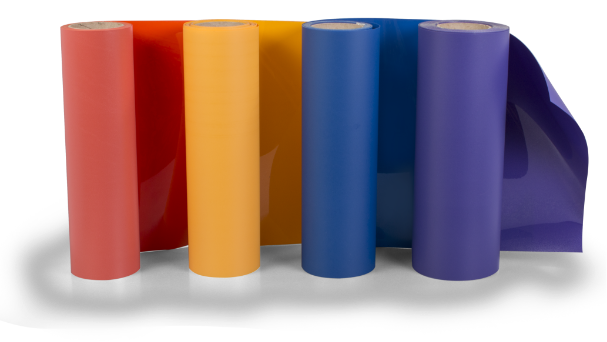
You don’t have to limit yourself to printing only t-shirts at events. Stahls’ DFC teamed up with New Balance at a track and field event and custom printed thousands of backpacks on demand.
Recently I had the opportunity to write another article for the Canadian publication, Imprint Canada, that everyone, even if they’re not in Canada, can (and should) read online. The editor said he wouldn’t mind if I reprint the information in my blog. But before I continue, I would like to comment how timely this information really is. With the state of the economy, more and more people are looking for ways to sell more or even start new businesses. The heat printing sector is booming because heat printing offers anyone the opportunity to make money printing t-shirts. It’s fast, it’s easy to get started and there are low start up costs. If you’re looking for more ways to earn money, or supplement your income, taking a heat press on the road might be something for you to consider. This article just scratches the surface, but hopefully gives you a good overview on the basics of heat printing custom garments at events.
REPRINTED from IMPRINT CANADA
If you had the chance to visit a county fair, festival, craft show, trade convention, sports tournament, race or any type of event recently, you probably said to yourself, “This would be a great place to sell custom garments, I should have a booth here next year.” Taking your heat press on the road is easier than you think. It’s not only a great way to profit from sales, it’s an excellent way to increase your visibility, build your brand, market your business and find new customers.
Here are some tips and tricks that will help you maximize your custom garment sales at events:
Find Your Venue
If you haven’t already found an event at which you would like to sell, there are a variety of resources online which will list just about every craft fair, festival, holiday gift show you’ve ever heard about and then some. You will be surprised at all the opportunities out there.
In Canada: Festival Net
In the U.S.: For a listing of thousands of events in the United States , try Craftmaster News.
Costs and Booth Selection
You should always try to determine if the travel, booth and lodging costs would make it worth your while. I know of some people that attend over 25 events a year, and they are on the road from May to October. Another experienced event decorator won’t go back to events where she doesn’t gross 10 times the cost of the booth. Keep in mind there will always be things you can’t control, such as weather or the number of people that actually attend each event. Rain and mud can wreak havoc on your tent, inventory and equipment and will also affect sales. Booth location is a big factor in your success. If you are a first-timer, you probably won’t get the best booth space, but hopefully you will receive better spaces year after year. Make sure you ask the organizer for as much information as possible and request a map of the venue when choosing your spot. You should also ask how many other garment decorators are already at the event, and where they are located. You don’t want to be right next door to another garment booth. If you do go to an event that is already saturated with garment sellers, as someone offering custom, on-the-spot personalization, you should have an edge over the competition. You could even offer to personalize garments purchased at other vendors, for a fee of course!
Think Beyond the Typical T-Shirt
If there are other vendors selling t-shirts, consider offering MORE than just t-shirts. You should have some t-shirt options, but you can also offer jackets, cinch-sacks, hats, shorts and flannel pants with matching hoodies. If it’s hot out, make sure you have a great tank top for women, teens and pre-teens. If it’s cooler, have several sweatshirt options. With a heat press you can decorate just about anything. Seriously ponder offering custom caps. You will have to bring a cap press, but the sales from custom caps, especially if you are the only one offering such a unique service, could make it worth the investment. You can also use a cap press to print on infant-sized onesies, umbrellas, sleeves and other small areas.
Plugging In
You will have to check with the show organizer as to the availability and cost of electricity at the event. The heat press you plan to bring will depend on what you are going to print, but most event marketers are fine with an 11” x 15” or 16” x 16” Clam-style press. Read your instruction manual, but such a press will usually require a 20 amp service at each outlet being used. Larger machines will require 20 amps but a cap press and a 11”x 15” machine can usually share a 20 amp circuit. You also need to watch out for extension cords or surge protectors that can’t carry the power needed. Electricians at the events should be able to help out. The main thing is making sure you have a “dedicated circuit.” You want to avoid trade shows or banquet halls in which all the plugs on one wall are on one circuit. Plugging in a heat press in such a scenario can blow out the whole event. Believe me, we’ve been there and done that.
Heat Printing Graphics You Can Offer
The easiest booth set up in a 10 x 10 booth would just be a heat press, t-shirts and custom transfers that give customers several choices. (Don’t forget to hang a banner in the back of the booth with your store name, logo, web address and the words “Personalize Any Item Now!” ) Make sure you have event-related choices in both black and white, you are then ready to print on any color shirt. A full color option is also always a good idea. Prepare several different sizes of the same logo, so you can offer placement on the front chest and a larger design on the back. Customers love the thrill of designing their own shirt on the spot. You can also bring kits of 1” or 2” lettering in a basic style (Pro Block or Cooper) that will allow you to add custom names to any pre-printed shirt or use in combination with custom transfers applied on site. If you are very experienced with using a cutter and heat transfer materials, you can bring along your computer and cutter. This will enable you to create just about any type of custom lettering your customers request. It is usually easier if you provide sample ideas or only provide a few choices. Some folks have a hard time making decisions when they have too many choices. You don’t want to lose sales because the buyer couldn’t decide what to buy. This does happen! Keeping things simple will make your life easier. As you gain experience you can expand your product offering. You can consider taking pre-cut embellishments such as glitter hearts, flag transfers, rhinestone hearts, or whatever would complement your design and offering them for an additional fee. Don’t forget to ask if customers want to upgrade. You’ll be surprised at how easy it is to upsell. At one track and field event, the shirt seller had separate transfers with the names of each discipline, such as shot-put, hurdles, pole-vault. The kids went crazy adding their personal events to each shirt, for an additional fee of course. Anything you can offer to help people make the shirt more special will be appreciated. You can also bring items that are already pre-embroidered or pre-printed with an event-related design and allow customers to further personalize at the event. Here’s an important tip: Don’t stitch or print a date on pre-prints. Encourage customers to add dates with heat print graphics. That way if the garments don’t sell, you can bring them back next year.
Photo Transfers
At some events, it is popular to sell full color photo shirts. I was once at a very upscale classic car event and of course had to purchase a t-shirt. Was I surprised that it was decorated with an inkjet transfer paper? Not really. I know that millions and millions of sheets of inkjet paper are sold everyday…they are being used by screen printers and decorators around the world who have recognized this as one solution for printing full color graphics in extremely low quantities, in a hurry. I know some people have a predisposition against the quality of inkjet paper prints, but it has its place in the world of heat printing, and definitely a place at events. Concerned about washability? Guess what? Some shirts don’t need to be washed 50 times and still look good. If someone wants a photo of their car, boat, tractor or prize-winning goat on their cap, inkjet transfers are the ideal way to do this.
Learning by Doing
Even if your first attempt at event marketing isn’t as successful as you envisioned, you will probably have learned a lot about what to improve upon next time. Being organized is key. Keep notes and make lists of what you forgot to bring and what you should leave at home next time. You can’t bring your whole shop with you, but make sure you have scissors, cover sheets and other crucial heat printing accessories. And don’t forget to bring water and snacks for those working the booth. Sometimes it is hard to get away and you can never leave the booth unattended. You should also arrange to for credit card purchases as well as keeping a cash box on hand. Don’t forget your business cards—you never know who you are going to run into at an event. It could be your next big customer!
Good luck and have fun out there. Event marketing is a great way to indulge your favorite hobbies and interests or support your kids at their sports events while you make money.


